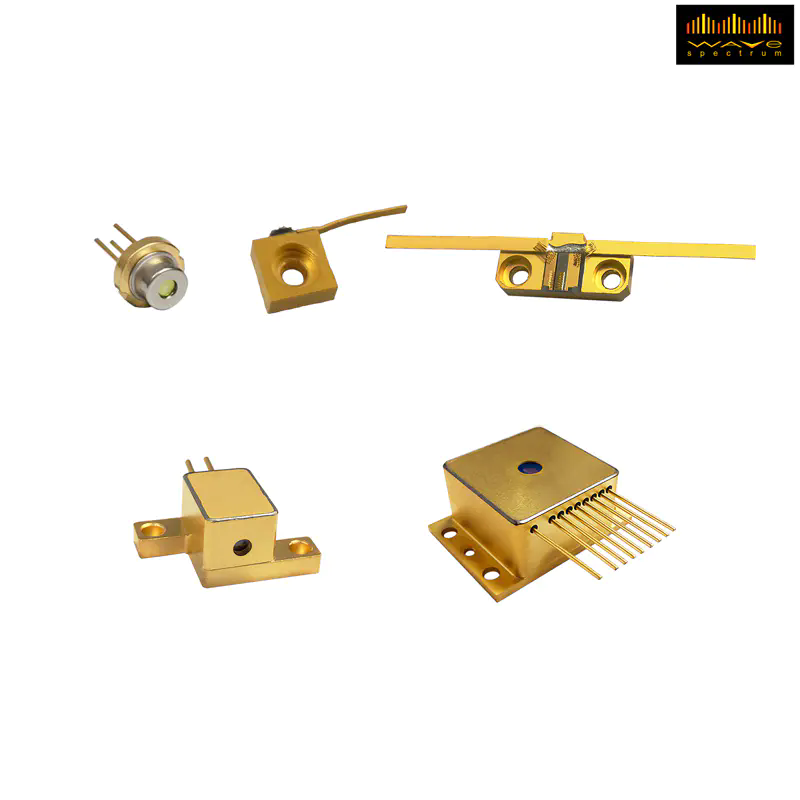What Makes Multi-mode Laser Diodes the Key Choice for High-Power Applications?
2025-09-12
A Multi-mode Laser Diode (MMLD) is a semiconductor-based light source that emits coherent radiation through multiple transverse optical modes within its cavity. Unlike single-mode diodes, which maintain a narrow beam profile optimized for precision and long-distance transmission, multi-mode diodes are engineered for higher power output and broader beam divergence. This makes them indispensable in a wide range of industrial, medical, and research applications where efficiency, reliability, and optical strength are crucial.
At their core, multi-mode diodes consist of a p-n junction structure fabricated on semiconductor wafers such as gallium arsenide (GaAs), indium phosphide (InP), or other compound semiconductors. When forward-biased current is applied, electrons and holes recombine to produce photons, amplified by the optical cavity until they achieve lasing threshold.
The “multi-mode” aspect refers to the ability of the diode’s cavity to support several transverse electromagnetic field distributions simultaneously, enabling it to output much higher optical power compared to its single-mode counterpart. However, this comes at the cost of reduced beam quality, which is acceptable in scenarios where power density is prioritized over precision.
Key Characteristics of Multi-mode Laser Diodes
-
High Optical Output: Designed to achieve watt-level performance.
-
Broader Emission Spectrum: Provides wavelength stability while covering wider ranges.
-
Beam Divergence: Wider spread compared to single-mode diodes, often requiring collimation.
-
Thermal Management: Efficient heat dissipation design is critical to ensure stability.
-
Long Lifespan: Engineered for continuous-wave and pulsed operations across demanding conditions.
These properties explain why industries ranging from material processing to biomedical imaging increasingly depend on multi-mode diodes for their high power-to-size ratio.
Why Choose Multi-mode Laser Diodes Over Other Light Sources?
The demand for laser-based solutions has skyrocketed in recent years as industries shift toward miniaturized, energy-efficient, and high-performance photonic technologies. Multi-mode laser diodes have emerged as the superior choice for a variety of reasons:
Power Density Advantage
One of the biggest reasons to choose MMLDs is their ability to deliver significantly higher power levels. Applications such as fiber laser pumping, illumination, and medical therapy rely on this enhanced output. While single-mode diodes are restricted to milliwatt-level power, multi-mode variants scale into multi-watt ranges without compromising durability.
Cost Efficiency
Compared to solid-state or gas lasers, MMLDs are far more cost-effective to produce and operate. They consume less energy, require fewer complex cooling systems, and are compact enough to integrate directly into devices, lowering overall system costs.
Flexibility in Wavelengths
Multi-mode diodes are available in a wide range of wavelengths, from visible red (630–690 nm) to near-infrared (780–980 nm) and even extended IR bands. This flexibility allows them to serve multiple industries, from spectroscopy to sensing and defense.
Compact and Reliable
The small form factor, combined with rugged packaging, ensures MMLDs can withstand high mechanical stress, making them ideal for portable and field-deployed systems. Their reliability in harsh environments significantly surpasses traditional light sources.
Technical Specifications of Multi-mode Laser Diodes
When evaluating multi-mode laser diodes, technical specifications play a crucial role in determining the right choice for a given application. Below is a representative parameter set:
| Parameter | Specification Range | Remarks |
|---|---|---|
| Wavelength | 630 nm – 980 nm (customizable up to 1550 nm) | Available in visible and infrared ranges |
| Optical Output Power | 100 mW – 10 W (continuous wave) | High-power models available |
| Beam Divergence | 8°–40° (fast axis), 25°–60° (slow axis) | Depends on design & optics |
| Spectral Width (FWHM) | 1–6 nm | Stable spectral performance |
| Operating Voltage | 1.8 – 2.2 V | Energy-efficient |
| Threshold Current | 30 – 200 mA | Low threshold design |
| Operating Temperature | -20°C to +70°C | With integrated thermal protection |
| Lifetime | >10,000 hours (continuous operation) | Long operational stability |
These parameters underline why multi-mode diodes dominate in optical pumping, industrial illumination, barcode scanning, and defense technologies. Their combination of efficiency, customization, and endurance makes them universally adaptable.
Applications, FAQs, and Future Outlook
Key Application Areas
-
Fiber Laser Pumping: High-power diodes pump energy into optical fibers to create industrial-grade fiber lasers for metal cutting, welding, and surface treatment.
-
Medical Treatments: Used in dermatology, dentistry, and photodynamic therapy, leveraging specific wavelengths for safe and effective patient outcomes.
-
Sensing and Imaging: Ideal for fluorescence microscopy, spectroscopy, and environmental sensing where stability is vital.
-
Consumer Electronics: Deployed in projectors, scanners, and illumination modules due to compactness.
-
Defense & Aerospace: Applied in target designation, rangefinding, and secure communication systems.
Common Questions About Multi-mode Laser Diodes
Q1: What is the main difference between multi-mode and single-mode laser diodes?
A1: The primary difference lies in the number of optical modes they support. Single-mode diodes generate a narrow beam with excellent spatial coherence but limited output power, making them ideal for communication systems and precision sensing. Multi-mode diodes, on the other hand, allow multiple optical modes within their cavity, resulting in higher power output but broader beam divergence. This makes them more suitable for industrial, medical, and illumination applications where output strength is prioritized.
Q2: How can thermal management extend the lifetime of multi-mode laser diodes?
A2: Thermal management is essential because laser diodes generate significant heat during operation. Without proper dissipation, heat can cause wavelength shifts, performance degradation, or even permanent damage. Effective solutions include using thermoelectric coolers, microchannel heat sinks, and optimized package designs. By maintaining a stable operating temperature, the diode’s lifetime can be extended well beyond 10,000 operational hours.
Future Outlook
With the rapid development of photonics, quantum technologies, and optoelectronics, the demand for high-performance laser diodes will continue to expand. Multi-mode variants, due to their scalability in power and wavelength versatility, are positioned to become even more integral in emerging fields such as autonomous vehicle sensors, advanced biomedical diagnostics, and next-generation communication networks.
The adoption of Multi-mode Laser Diodes is not just a technological shift but a strategic choice for industries aiming to balance high output power, cost efficiency, and compact integration. From medical treatments to aerospace defense, their adaptability ensures they remain indispensable in high-demand sectors.
At Wavespectrum, we specialize in delivering high-quality multi-mode laser diodes engineered for precision, durability, and superior optical performance. Our products are designed to meet global industry standards and tailored to customer-specific applications. To explore our product line and discuss customized solutions for your project, contact us today and discover how Wavespectrum can empower your next innovation.



